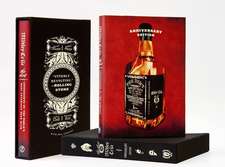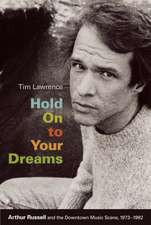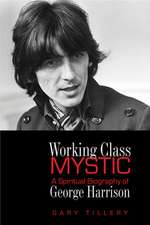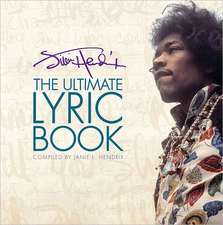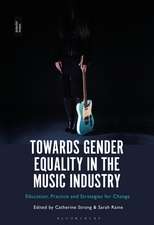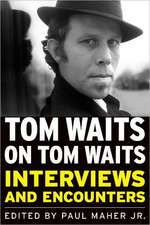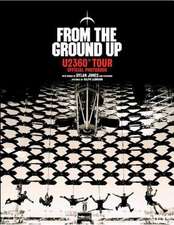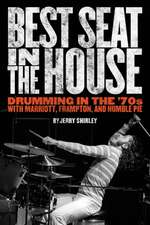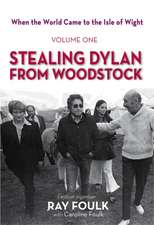Music City Melbourne: Urban Culture, History and Policy
Autor Prof Shane Homan, Professor or Dr. Seamus O’Hanlon, Dr Catherine Strong, Professor or Dr. John Tebbutten Limba Engleză Paperback – 28 iun 2023
| Toate formatele și edițiile | Preț | Express |
|---|---|---|
| Paperback (1) | 190.68 lei 6-8 săpt. | |
| Bloomsbury Publishing – 28 iun 2023 | 190.68 lei 6-8 săpt. | |
| Hardback (1) | 509.76 lei 6-8 săpt. | |
| Bloomsbury Publishing – 29 dec 2021 | 509.76 lei 6-8 săpt. |
Preț: 190.68 lei
Preț vechi: 249.01 lei
-23% Nou
Puncte Express: 286
Preț estimativ în valută:
36.49€ • 38.19$ • 30.37£
36.49€ • 38.19$ • 30.37£
Carte tipărită la comandă
Livrare economică 01-15 aprilie
Preluare comenzi: 021 569.72.76
Specificații
ISBN-13: 9781501369643
ISBN-10: 1501369644
Pagini: 224
Dimensiuni: 152 x 229 x 25 mm
Greutate: 0.3 kg
Editura: Bloomsbury Publishing
Colecția Bloomsbury Academic
Locul publicării:New York, United States
ISBN-10: 1501369644
Pagini: 224
Dimensiuni: 152 x 229 x 25 mm
Greutate: 0.3 kg
Editura: Bloomsbury Publishing
Colecția Bloomsbury Academic
Locul publicării:New York, United States
Caracteristici
Includes key case studies (with interviews) of famous venues, musicians, managers, booking agents and venue owners that provide first-hand histories of city development, including central government personnel responsible for key changes in urban planning, licensing and cultural policy
Notă biografică
Shane Homan is Associate Professor of Media Studies at Monash University, Australia. He is the editor of the Bloomsbury Handbook of Popular Music Policy (2022). Seamus O'Hanlon is Associate Professor of History at Monash University, Australia. He has published five books, including City Life: The New Urban Australia (2018).Catherine Strong is Associate Professor in the Music Industry program at RMIT in Melbourne, Australia. Among her publications are Towards Gender Equality in the Music Industry: Education, Practice and Strategies for Change (co-editor, Bloomsbury 2019) and Death and the Rock Star (co-editor, 2015).John Tebbutt is Adjunct Associate Professor in the School of Media and Communication, RMIT University, Australia.
Cuprins
List of ContributorsList of FiguresAcknowledgements1. Introduction 2. The Transformed City 3. The Live Music City 4. The Media City 5. The Recording City 6. The Legendary City 7. The Divided City 8. The Branded City 9. ConclusionEndnotesReferencesIndex
Recenzii
Music City Melbourne is one of the best books I've read in the growing field of urban music studies. More than just a celebration of Melbourne's well-known musical effervescence, Music City Melbourne offers meticulously-researched analyses of the role of public policy, media, social divisions, entrepreneurship and urban planning in the city's rich history of music-making. Written by leading experts in their fields, the book is academically rigorous and a pleasure to read.
Melbourne has been long touted as Australia's 'live music capital', and one of the world's most creative cities. How did this come to be? In their far-reaching exploration, Homan, O'Hanlon, Strong and Tebbutt dived into the archives, trawled old newspapers, delved into licensing and venue regulations and conducted interviews with musicians, booking agents, managers, fans and policy-makers, to reveal the hidden stories beneath the fabled 'music city'. It's a most welcome addition to the debate about creative cities, and model for how to examine musical histories in place.
If you are interested in the music cities concept and related debates, then this case study of the place of pop and rock in Melbourne, Australia will be a must-read. Delving into the pleasures and pressures of urban music activities, industries and policies, the authors guide the reader through the city's 'popular music ecosystem' from the 1950s onwards. Though not intended as a definitive account of Melbourne's music, the analysis - punctuated as it is with the voices of fans, musicians, managers, venue owners, journalists and policy makers - works effectively to bring alive a multitude of historical and contemporary experiences of this important 'live music capital.'
Melbourne has been long touted as Australia's 'live music capital', and one of the world's most creative cities. How did this come to be? In their far-reaching exploration, Homan, O'Hanlon, Strong and Tebbutt dived into the archives, trawled old newspapers, delved into licensing and venue regulations and conducted interviews with musicians, booking agents, managers, fans and policy-makers, to reveal the hidden stories beneath the fabled 'music city'. It's a most welcome addition to the debate about creative cities, and model for how to examine musical histories in place.
If you are interested in the music cities concept and related debates, then this case study of the place of pop and rock in Melbourne, Australia will be a must-read. Delving into the pleasures and pressures of urban music activities, industries and policies, the authors guide the reader through the city's 'popular music ecosystem' from the 1950s onwards. Though not intended as a definitive account of Melbourne's music, the analysis - punctuated as it is with the voices of fans, musicians, managers, venue owners, journalists and policy makers - works effectively to bring alive a multitude of historical and contemporary experiences of this important 'live music capital.'

